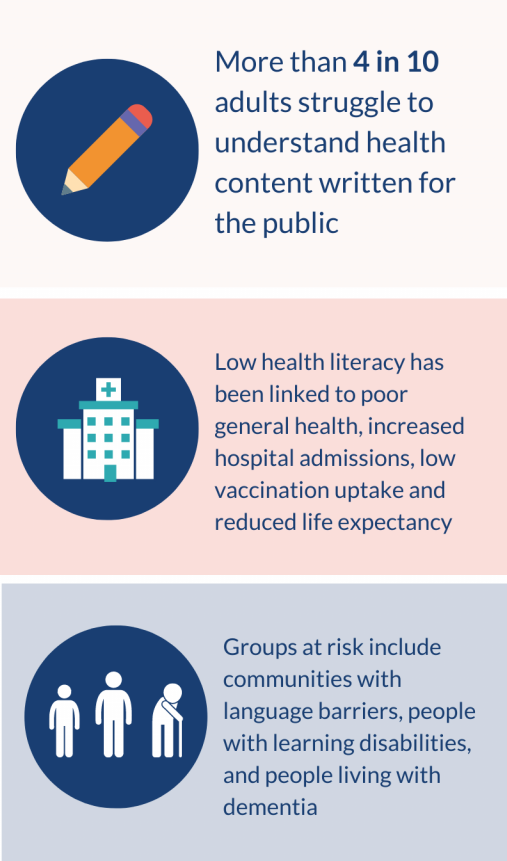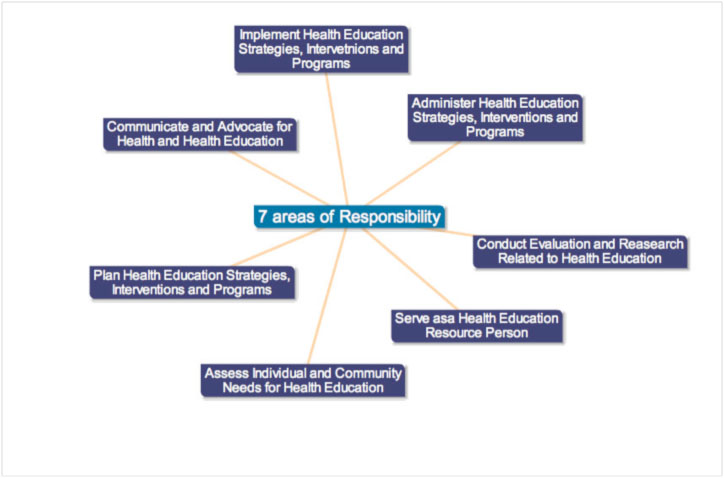|
The Teach-back Method
The teach-back method, also called the "show-me" method, is a communication confirmation method used by healthcare providers to confirm whether a patient (or care takers) understands what is being explained to them. If a patient understands, they are able to "teach-back" the information accurately. This is a communication method intended to improve health literacy. There can be a significant gap in the perception of how much a patient needs information, or how effective a provider's communication is.Teach Back: A tool for improving provider-patient communication. The Ethics Center. 2006. Retrieved from http://www.ethics.va.gov/docs/infocus/InFocus_20060401_Teach_Back.pdf This can be due to various reasons such as a patient not understanding medical terminology, not feeling comfortable asking questions or even cognitive impairment. Not only does the teach-back method help providers understand the patient's needs in understanding their care, it also allows providers to evaluate their c ... [...More Info...] [...Related Items...] OR: [Wikipedia] [Google] [Baidu] [Amazon] |
Health Literacy
Health literacy is the ability to obtain, read, understand, and use healthcare information in order to make appropriate health decisions and follow instructions for treatment. There are multiple definitions of health literacy, in part because health literacy involves both the context (or setting) in which health literacy demands are made (e.g., health care, media, internet or fitness facility) and the skills that people bring to that situation. Since health literacy is a primary contributing factor to health disparities, it is a continued and increasing concern for health professionals. The 2003 National Assessment of Adult Literacy (NAAL) conducted by the US Department of Education found that 36% of participants scored as either "basic" or "below basic" in terms of their health literacy and concluded that approximately 80 million Americans have limited health literacy. These individuals have difficulty with common health tasks including reading the label of a prescribed drug. Se ... [...More Info...] [...Related Items...] OR: [Wikipedia] [Google] [Baidu] [Amazon] |
National Quality Forum
National Quality Forum (NQF) is a United States–based non-profit membership organization that promotes patient protections and healthcare quality through measurement and public reporting. It was established in 1999 based on recommendations by the President's Advisory Commission on Consumer Protection and Quality in the Health Care Industry. NQF’s membership comprises over 400 organizations, representing consumers, health plans, medical professionals, employers, government and other public health agencies, pharmaceutical and medical device companies, and other quality improvement organizations. NQF has helped develop guidelines on palliative care. On August 16, 2023, the Joint Commission The Joint Commission is a United States-based nonprofit tax-exempt 501(c) organization that accredits more than 22,000 US health care organizations and programs. The international branch accredits medical services from around the world. A majori ... acquired the National Quality Forum. Jon ... [...More Info...] [...Related Items...] OR: [Wikipedia] [Google] [Baidu] [Amazon] |
Hospital Readmission
A hospital readmission is an episode when a patient who had been discharged from a hospital is admitted again within a specified time interval. Readmission rates have increasingly been used as an outcome measure in health services research and as a quality benchmark for health systems. Generally, higher readmission rate indicates ineffectiveness of treatment during past hospitalizations. Hospital readmission rates were formally included in reimbursement decisions for the Centers for Medicare and Medicaid Services (CMS) as part of the Patient Protection and Affordable Care Act (ACA) of 2010, which penalizes health systems with higher than expected readmission rates through the Hospital Readmission Reduction Program. Since the inception of this penalty, there have been other programs that have been introduced, with the aim to decrease hospital readmission. The Community Based Care Transition Program, Independence At Home Demonstration Program, and Bundled Payments for Care Improveme ... [...More Info...] [...Related Items...] OR: [Wikipedia] [Google] [Baidu] [Amazon] |
Feedback Loops
Feedback occurs when outputs of a system are routed back as inputs as part of a chain of cause and effect that forms a circuit or loop. The system can then be said to ''feed back'' into itself. The notion of cause-and-effect has to be handled carefully when applied to feedback systems: History Self-regulating mechanisms have existed since antiquity, and the idea of feedback started to enter economic theory in Britain by the 18th century, but it was not at that time recognized as a universal abstraction and so did not have a name. The first ever known artificial feedback device was a float valve, for maintaining water at a constant level, invented in 270 BC in Alexandria, Egypt. This device illustrated the principle of feedback: a low water level opens the valve, the rising water then provides feedback into the system, closing the valve when the required level is reached. This then reoccurs in a circular fashion as the water level fluctuates. Centrifugal governors were used ... [...More Info...] [...Related Items...] OR: [Wikipedia] [Google] [Baidu] [Amazon] |
Participatory Learning
Citizen participation or public participation in social science refers to different mechanisms for the public to express opinions—and ideally exert influence—regarding political, economic, management or other social decisions. Participatory decision-making can take place along any realm of human social activity, including economic (i.e. participatory economics), political (i.e. participatory democracy or parpolity), management (i.e. participatory management), cultural (i.e. polyculturalism) or familial (i.e. feminism). For well-informed participation to occur, it is argued that some version of transparency, e.g. radical transparency, is necessary but not sufficient. It has also been argued that those most affected by a decision should have the most say while those that are least affected should have the least say in a topic. Classifying participation Sherry Arnstein discusses eight types of participation in ''A Ladder of Citizen Participation'' (1969). Often terme ... [...More Info...] [...Related Items...] OR: [Wikipedia] [Google] [Baidu] [Amazon] |
Health Education
Health education is a profession of educating people about health. Areas within this profession encompass environmental health, physical health, social health, emotional health, intellectual health, and spiritual health, as well as sexual and reproductive health education. It can also be defined as any combination of learning activities that aim to assist individuals and communities improve their health by expanding knowledge or altering attitudes. Health education has been defined differently by various sources. The National Conference on Preventive Medicine in 1975 defined it as "a process that informs, motivates, and helps people to adopt and maintain healthy practices and lifestyles, advocates environmental changes as needed to facilitate this goal, and conducts professional training and research to the same end." The Joint Committee on Health Education and Promotion Terminology of 2001 defined Health Education as "any combination of planned learning experiences based on sou ... [...More Info...] [...Related Items...] OR: [Wikipedia] [Google] [Baidu] [Amazon] |


